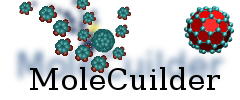| [084729c] | 1 | /*
|
|---|
| 2 | * ManipulableClone.hpp
|
|---|
| 3 | *
|
|---|
| 4 | * Created on: Jan 6, 2011
|
|---|
| 5 | * Author: heber
|
|---|
| 6 | */
|
|---|
| 7 |
|
|---|
| 8 | #ifndef MANIPULABLECLONE_HPP_
|
|---|
| 9 | #define MANIPULABLECLONE_HPP_
|
|---|
| 10 |
|
|---|
| 11 | /** \section <ManipulableClone> (ManipulableClone Howto)
|
|---|
| 12 | *
|
|---|
| 13 | * Prototypes serves as templates in object creation, i.e. new objects are
|
|---|
| 14 | * created by coping the prototype. Therefore each prototypical type has to
|
|---|
| 15 | * implement a clone() function. Here, we go one step further: In order to
|
|---|
| 16 | * allow for changing member variables a clone contains which is not possible
|
|---|
| 17 | * by member functions but only through ythe constructor, you may instantiate
|
|---|
| 18 | * a ManipulableClone, i.e. implement a manipulatedclone(set) function which
|
|---|
| 19 | * uses a parameter struct \a set containing new values to be used in the
|
|---|
| 20 | * constructor call.
|
|---|
| 21 | *
|
|---|
| 22 | * By inheriting this pattern and implementing the clone function you make
|
|---|
| 23 | * sure that the prototypes, e.g. to be stored in a factory table, can be
|
|---|
| 24 | * safely copied (the factory just calls clone of the prototype) and can
|
|---|
| 25 | * be handed out by the abstract and common interface.
|
|---|
| 26 | *
|
|---|
| 27 | * <h2> Howto </h2.
|
|---|
| 28 | *
|
|---|
| 29 | * Basically, you if you have your Prototype types, e.g. \a Prototype1 that
|
|---|
| 30 | * all have a common interface, \a IPrototype, you just inherit additionally
|
|---|
| 31 | * the specific ManipulableClone<IPrototype> class as follows:
|
|---|
| 32 | *
|
|---|
| 33 | * @code
|
|---|
| 34 | * class Prototype1 :
|
|---|
| 35 | * public IPrototype,
|
|---|
| 36 | * public ManipulableClone<IPrototype,ParameterSet>
|
|---|
| 37 | * {
|
|---|
| 38 | * public:
|
|---|
| 39 | * IPrototype clone()
|
|---|
| 40 | * {
|
|---|
| 41 | * ... do something to clone the class ...
|
|---|
| 42 | * };
|
|---|
| 43 | * IPrototype clone(const ParameterSet &_params)
|
|---|
| 44 | * {
|
|---|
| 45 | * ... do something to clone the class ...
|
|---|
| 46 | * ... while using _params ...
|
|---|
| 47 | * };
|
|---|
| 48 | * };
|
|---|
| 49 | * @endcode
|
|---|
| 50 | *
|
|---|
| 51 | * Note that ParameterSet should be a structure containing public member
|
|---|
| 52 | * values.
|
|---|
| 53 | *
|
|---|
| 54 | */
|
|---|
| 55 | template <class interface, class parameterset>
|
|---|
| 56 | class ManipulableClone
|
|---|
| 57 | {
|
|---|
| 58 | public:
|
|---|
| 59 | virtual ~ManipulableClone() {};
|
|---|
| 60 | virtual interface* clone() const = 0;
|
|---|
| 61 | virtual ManipulableClone<interface, parameterset>* manipulatedclone(const parameterset &_parameters) const = 0;
|
|---|
| 62 | };
|
|---|
| 63 |
|
|---|
| 64 | #endif /* MANIPULABLECLONE_HPP_ */
|
|---|
